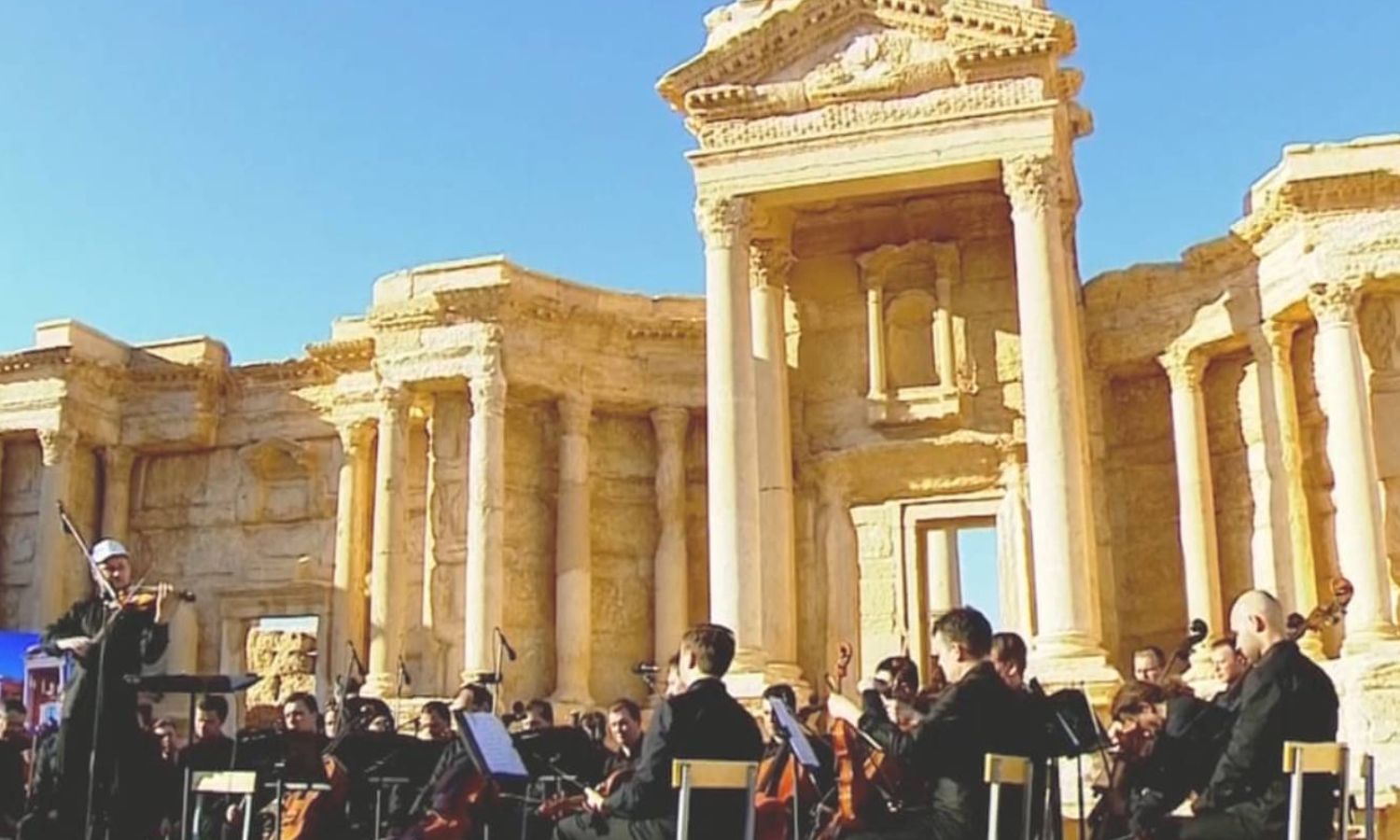



Enab Baladi – Jana al-Issa
The announcement of the Syrian regime’s Tourism Ministry about the number of tourists arriving in Syria over the past seven months raised questions about the extent of economic benefit to citizens in case the tourism sector is revitalized under the current circumstances.
On 19 July, the Director of Planning and International Cooperation at the Ministry of Tourism, Ahed al-Zaim, said that the number of Arab and foreign tourists who visited regime-controlled areas since the beginning of this year had reached about 727,000, including 98,000 foreigners and 629,000 Arabs.
Al-Zaim stated that the decision to reopen border crossings in March contributed to an increase in the number of tourists this year, after a near total closure of the crossings in 2021 due to the spread of the COVID-19 pandemic.
Since recapturing large areas previously held by opposition factions, the regime’s government has intensified its tourism propaganda with a view to encouraging tourists to come, which would supply its treasury with more funds, especially foreign exchange.
The Program Manager at the Political and Economic Networks Observatory, Dr. Karam Shaar, told Enab Baladi that the number of tourists announced since the beginning of this year is logical based on the number of tourists during the years preceding the emergence of the coronavirus.
According to Central Bureau of Statistics figures, the number of tourists arriving in Syria in 2018 was about 1.8 million. In 2019, the number reached 2.4 million, while it decreased in 2020 (the year of the emergence of the coronavirus) to only 480,000 people.
However, most of these people classified as tourists are of Lebanese and Iraqi nationalities, according to statistics seen by Dr. Shaar, who indicated that the proportion of people of Lebanese and Iraqi nationalities was about 75 percent of the total number of tourists in 2019, and 72 percent in 2020.
Shaar added that these people enter on a “tourist visa” but do not necessarily enter for the purpose of actual tourism; they may have businesses or families to visit in Syria.
The economist noted that most of them may not spend as one would expect even if they enter as actual tourists, nor will they pump large sums into markets that may help revitalize the tourism sector.
Local and official media is broadcasting news frequently referring to tourist delegations visiting Syria. This news is being employed to perpetuate the idea that Syria has returned to the way it was once before.
These figures are questionable, according to The Daily Beast news website in November 2020, which quoted testimonies of workers in the tourism sector and people who had visited Syria over the last two years.
Tourism workers in regime-held areas are saying that “Syrian government figures on tourist numbers are exaggerated” because the government counts anyone who crosses the border as a tourist.
The news website said tourists began arriving in the Syrian capital of Damascus after the Syrian regime took control of Eastern Ghouta in 2017. It also noted that many of these tourists are coming to show solidarity with the Syrian regime.
As stated by researcher Karam Shaar, government institutions benefit from revitalizing tourism through touristic facilities that are either fully or partially owned.
Shaar highlighted the need to understand that the tourism sector in regime-controlled areas has improved over the current year compared to the last two years, but it is still much worse than it was in 2018 and 2019.
According to the official Syrian Arab News Agency (SANA), the Ministry of Tourism announced at the end of December 2021 that the state treasury was provided with 11 billion Syrian pounds in revenues from the Ministry’s touristic facilities over the past year.
According to its statement, the Ministry received 5.6 billion Syrian pounds through direct revenues and collected 5.5 billion pounds through indirect revenues such as taxes and fees.
The statement indicated that the Ministry’s hotels (Dama Rose, Sheraton Damascus, Shahba Aleppo, La Mira Hotel & Resort) reported profits of 14.7 billion Syrian pounds during 2021.
The profits of the Syrian Transport and Tourism Company totaled at 5 billion Syrian pounds.
The regime’s government continues to promote a revitalization of the tourism sector out of its “interest” in its impact on people’s living and economic conditions.
Shaar stressed that the private sector also benefits from revitalizing tourism since tourists’ purchasing power is greater than that of Syrian residents, meaning that the private sector will benefit from tourists through several channels, including hotel services, restaurants, and tourist activities in general. Tourism companies, including tourist guides, are Syrian workers who will also benefit from tourism revenues.
Shaar highlighted the fact that there is no academic method to determine the exact size of the benefit.
He stressed that tourism-related economic activities are considered for many countries, Syria included a source of national income, noting that it is difficult to measure the real contribution of such activities.
According to the former Minister of Tourism, Saadallah Agha al-Qalaa, Syria’s tourism sector revenues in 2010 totaled at 8.4 billion USD, accounting for 14 percent of Syria’s GDP. It also created jobs for 11 percent of Syrian workers.
In a report published on 10 October 2021, the state-owned newspaper al-Wehda spoke about the estimates of the Ministry of Tourism in the regime’s government for the losses of the tourism sector since the beginning of the war, which amounted to some 330 billion Syrian pounds.
The newspaper quoted the Director of Planning in the Ministry of Tourism, Qassem Darwish, as saying that the Ministry’s estimates indicate that the significant improvement of this sector will not be until 2030. “Until that date, the Syrian economy will continue to report more annual losses instead of the profits it was making from the tourism sector.”
if you think the article contain wrong information or you have additional details Send Correction